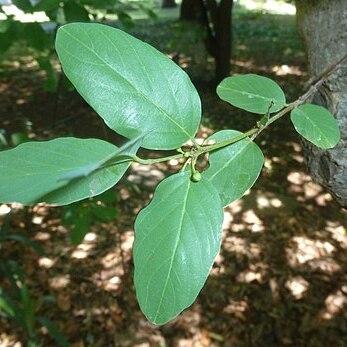Leaves usually opposite or subopposite, glabrous; lamina 12–40(60) × 6–25 mm., elliptic to ovate, entire; midrib prominent beneath; lateral nerves 5–6, extending to the leaf-margin and prominent beneath; petiole 1–3 mm. long, channelled above.
Tree 6–8(12) m. high, with rough grey bark; branches spreading; young branchlets puberulous.
Drupe 6–9 × 3 mm., ellipsoid, with yellow edible flesh surrounding the 2-seeded kernel.
Disk cupular, not enveloping the ovary, margin notched above insertion of filaments.
Flowers 1–4(6) in leaf-axils; pedicels slender, 4–14 mm. long.
Petals 2 mm. long, obovate, cucullate, often emarginate.
Ovary free from disk; style 1·5–3 mm. long, 2-fid.
Sepals 2 mm. long, deltate, glabrous.
Flower bud globose, 2 mm. in diam.
Stamens 1·5–2 mm. long.


